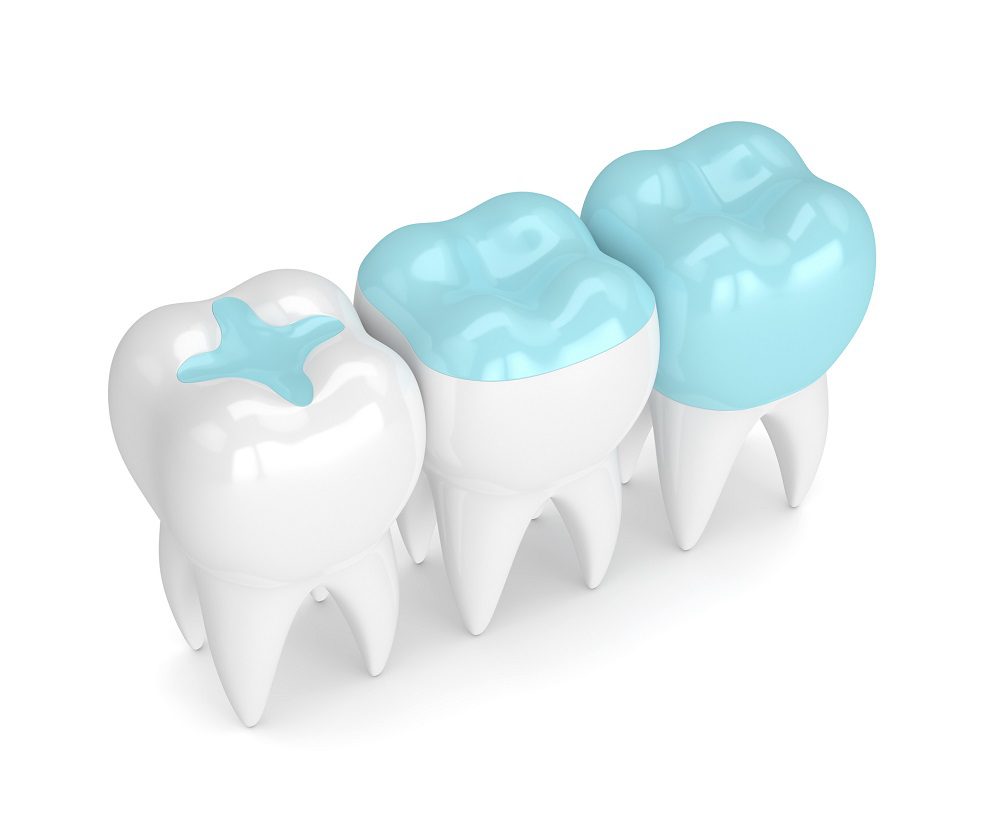Dental decay weakens your tooth and opens your mouth to potential disease and cavities. While many smaller cases of decay can be fixed with a traditional filling, more evolved cases need additional dental restoration. Inlays and Onlays in Owings Mills, MD, can help prevent further decay and gum disease. If you have an extensive cavity or other dental concern, your dentist may recommend an inlay or onlay to protect your teeth better.

The Differences Between Inlays and Onlays in Owings Mills, MD
While both inlays and onlays are used to treat cavities and other dental decay, they are two different types of treatment. An inlay is less extensive, filling inside the cusp of your tooth. Onalys, however, also fill into the cusp of your tooth. Your dentist will be able to recommend which one is the better option depending on the placement and extensiveness of the decay. A less extensive cavity in the cusp of your tooth will likely receive an inlay, while a larger cavity will likely receive an onlay.
The Similarities Between Inlays and Onlays in Owings Mills, MD
While they aren’t the same, there are many similarities between inlays and onlays. Both are types of general dentistry used to treat extensive tooth decay. When cavities are too large to securely treat with a regular filling, dentists will use inlays and onlays as treatment instead. However, if the decay has spread to most of the tooth, your dentist may recommend a crown instead.
Inlay and Onlay Placement
Inlays and onlays are used to fill cavities in the cusp of your teeth. Your anterior teeth (the front teeth between your canines) have a flat tooth tip, meaning they can’t receive inlay and onlay treatment. However, your posterior (molar) teeth can receive inlay and onlay treatment. If you have tooth decay in your back teeth, your dentist will discuss potential treatment options alternative to fillings to help provide better protection and stability for your bite.
Inlay and Onlay Procedure
Although one is more extensive than the other, both inlays and onlays follow the same procedure. First, your dentist will clean and clear away the decay on your tooth. This creates a smooth and healthy surface to work on. Next, they’ll take an impression of your teeth to ensure the inlay or onlay fits perfectly.
Your dentist will send the model along with instructions and a color-match guide to a dental lab where the inlay or onlay will be made out of a durable material, typically porcelain. However, leaving your tooth unprotected is risky while waiting for the filling to be made. So before you leave, your dentist will create a temporary inlay or onlay using a composite resin material.
Once your inlay or onlay is made, you’ll come back to have the temporary removed and the permanent applied. Inlays and onlays are made to look and feel like your natural teeth. So, you don’t have to worry about changing your bite or smile.
Do You Have Dental Decay?
The longer dental decay sits on your teeth, the more it can cause permanent damage and disease. Seeing a dentist as soon as possible for a filling or other treatment is crucial to maintaining your oral health. If you need dental inlays and onlays in Owings Mills, MD, call Owings Mills Dental Care today at 410-782-3021.
